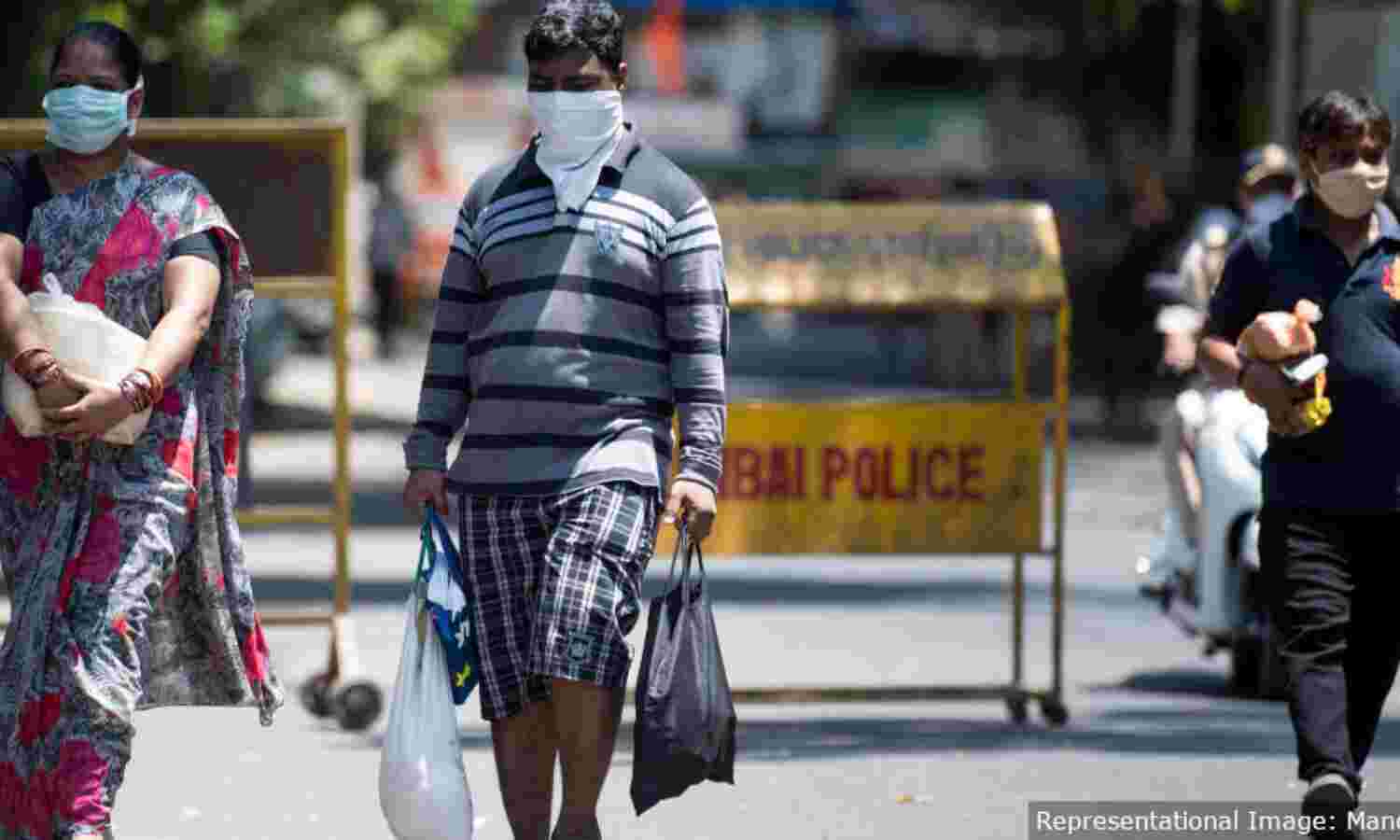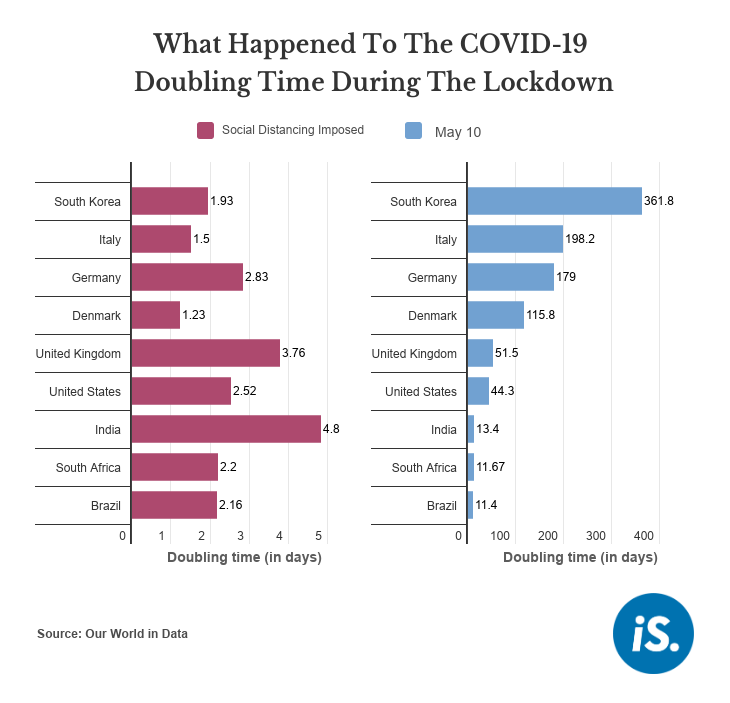India Underprepared To Handle COVID-19 Outbreaks As Curbs Are Lifted, Data Show

Mohali: As India prepares to open up its economy and allow resumption of normal social activity, the country has a lower testing rate than other countries that are also opening up. Its cases are increasing faster than in other countries, and contact tracing is still poor in most states, leaving it underprepared to control COVID-19 outbreaks, data show.
In May 2020, Disneyland in Shanghai reopened and Bundesliga, the German football league, kicked off, even as COVID-19 cases crossed 5 million worldwide. Countries across the globe have started to ease lockdown restrictions as they have either prepared their health systems to control the epidemic (such as in Germany and Denmark), or controlled the epidemic itself (such as New Zealand). A few, such as Brazil, which do not have the epidemic under control, are reopening anyhow, against the advice of health experts.
India is in a unique position. Even after a two-month lockdown that severely impacted the economy and the people, the epidemic has still not reached its peak and COVID-19 cases continue to increase steadily each day--the rate fluctuating between 4.68% and 5.5%, as government data show.
On June 1, India had 190,535 total and 93,322 active cases, overshooting Germany and France to become the 7th most affected worldwide. Across the world, COVID-19 cases have crossed 6.2 million and deaths 375,000.
World’s most stringent lockdown
India’s initial response to the pandemic was swift--it imposed a countrywide lockdown on March 24, 2020, before cases crossed 500. India’s lockdown guidelines were among the most stringent in the world, according to an analysis by the Blavatnik School of Government at Oxford University.
| Stringency Of COVID-19 Lockdowns By Country | ||||
|---|---|---|---|---|
| Social Distancing Imposed* | Total Cases | Total Deaths | Peak Lockdown Stringency | |
| New Zealand | 21 Mar | 53 | 0 | 97.35 |
| Italy | 23 Feb | 79 | 2 | 94.58 |
| South Africa | 18 Mar | 85 | 0 | 91.4 |
| India | 16 Mar | 93 | 2 | 100 |
| Brazil | 17 Mar | 234 | 0 | 70.52 |
| Denmark | 11 Mar | 264 | 0 | 84.12 |
| South Korea | 23 Feb | 601 | 5 | 83.46 |
| United States | 16 Mar | 3774 | 69 | 71.58 |
| Germany | 18 Mar | 7156 | 13 | 78.97 |
| United Kingdom | 26 Mar | 9529 | 694 | 82.27 |
Source: Analysis by Blavatnik School of Government at Oxford University
*The start date of social distancing is when the stringency of the lockdown exceeded 50 out of 100 points.
Google’s mobility report also indicates that India’s lockdown kept more people at home compared to other nations. While fewer people went out in all countries during lockdowns, Germans and Americans were more likely to go out as compared to Indians and South Africans.
Now, as nations ease their lockdowns, Germany and the US have almost returned to pre-COVID-19 mobility levels, with an increase in recreational activities and low movement at retail and transit locations. India has reported the least change in mobility from April 1 to May 10 among the countries compared.

Source: Google COVID19 - Community Mobility Reports
The smaller the size of the pentagon, the fewer the people who left home. The inner circle corresponds to reduction in visits, and the outer circle corresponds to increase in visits, compared to a baseline of January 5 to February 3, 2020.
India unprepared to open up
Unlike other countries that are lifting the lockdown, India has been unable to effectively utilise the lockdown period to prepare for exiting the lockdown, both in terms of curbing the epidemic and increasing the testing rate, when compared to other countries that are opening the lockdown, our analysis found.
India’s lockdown did slow the transmission of the virus, with the case doubling time increasing from 4.8 days when social distancing guidelines were imposed to about 12 days by May 11. The latter is comparable to Brazil and South Africa, according to data from the Indian Ministry of Health and Family Welfare. Brazil is currently the world’s second worst-hit after the US.
But this increase is lower as compared to other countries that are lifting the lockdown: Denmark’s doubling time increased from 1.23 to 115 days, Italy’s from 1.5 to 198 days and New Zealand’s from 2.27 to 900 days.
India had started easing the lockdown in a phased manner from May 4, 2020. Its current doubling time is 15.8 days, our analysis shows.

India increased testing from 1,800 tests per day before the lockdown was imposed to 125,428 tests per day on May 31. When India had 1,000 COVID-19 deaths, only Poland, Germany and Russia had conducted more tests than India at that death count, data from Our World in Data show.
However, this number needs to be viewed in the context of India’s large population. Delhi, for instance, which has seen a large number of COVID-19 cases, has conducted a maximum of 9,600 tests/day (on May 10) or 0.32 tests per 1,000 per day. This stands in contrast to 1.13 in Italy, 1.03 in New Zealand and 1.7 in Denmark--all countries now reopening. (India tests 0.07 per 1,000).
India’s testing criteria is also restrictive compared to other nations. As of May 10, 2020, South Korea and New Zealand tested any individual (including asymptomatics) who wished to get tested, and countries such as Denmark and Germany test any individual who shows COVID-19-like symptoms, according to the Oxford study.
In India, among individuals outside containment zones, only those who have had contact with a COVID-19 patient are eligible for testing. Symptomatic individuals without a history of contact with a confirmed COVID-19 patient or living in a non-containment area have been excluded, unless they have Severe Acute Respiratory Illness.

Source: Blavatnik school of Government at Oxford University
Note: The testing criteria in each country is different. For e.g., China and the US test anyone seeking a test, Australia and Germany test any symptomatic patient, whereas India and South Africa only test individuals with contact with a confirmed COVID-19 case.
Surveillance, serological study
India has taken some steps, such as launching the Aarogya Setu contact-tracing mobile phone application, in line with actions by other countries such as South Korea, China and Germany. But the government must address privacy concerns to increase adoption, without which the app will be of limited use, as per an unpublished study modelling different usages of such an app.
The Indian Council of Medical Research (ICMR) has tapped into lab capacity from national programmes for tuberculosis (TB) and HIV to ramp up testing rates and has initiated a serological study to estimate the prevalence of COVID-19.
Announced on May 12, the serological study is currently planned for only 69 districts with 24,000 people and might not provide a view of the true extent of the epidemic. The survey would have to be conducted repeatedly to provide a dynamic view of the spread of the epidemic. Further, district administrations would have to be involved in the survey to be able to use the results for ground-level planning of containment zones, to increase capacity for contact tracing, etc. Studies have confirmed that testing and contact tracing varies from district to district and from state to state.
Although TB lab capacity is now approved for use in COVID-19 testing, a large part of that capacity would be utilised by the TB programme itself to catch up on the backlog and meet targets on TB case notifications, which have dropped eight-fold during the lockdown.
(Deo is a professor at the Indian School of Business and the Executive Director at Max Institute of Healthcare Management (MIHM). Das is an analyst at MIHM.)
We welcome feedback. Please write to respond@indiaspend.org. We reserve the right to edit responses for language and grammar.


